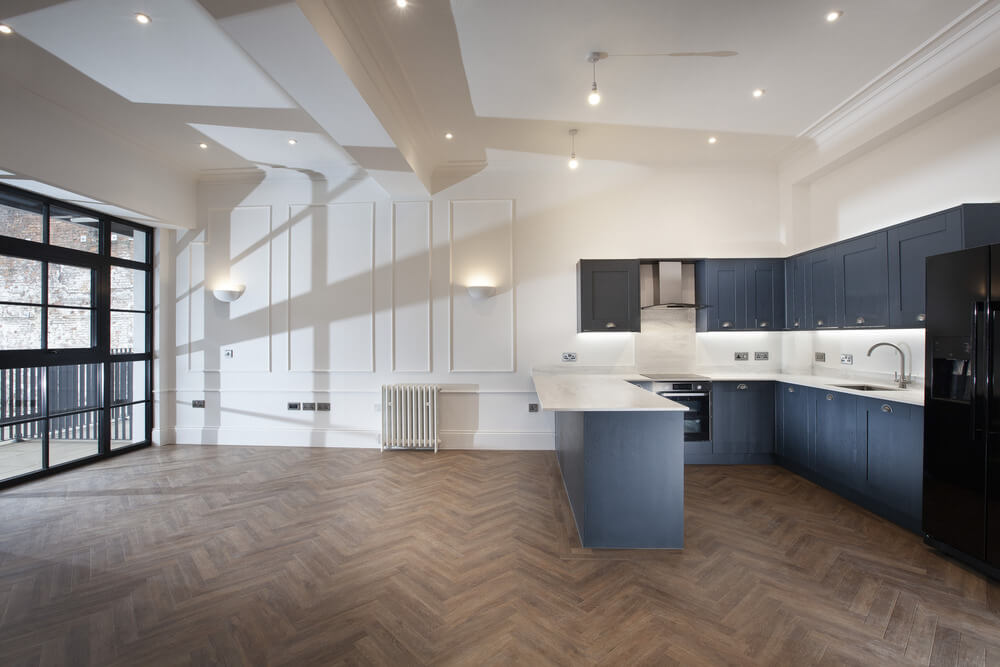In recent years, Birmingham has seen a dramatic increase in the number of high-rise apartment buildings, with developers responding to the region’s ever-increasing population and demand for new homes. However, paired with this is a focus on repairing and rejuvenating the city’s older buildings, some of which have gone untouched for hundreds of years.
Heritage regeneration is all about returning buildings to their former glory – exploring their uses, emphasising and expressing their original features and heritage value while integrating contemporary and more sustainable features through construction to facilitate bringing heritage assets back into sustainable long-term use.
Many such sites can be found in the city’s Jewellery Quarter, a thriving hub for the jewellery trade and home to many former industrial buildings. With an ambition to bring some of these sites back to life, at Cordia UK, our leading project is refurbishing and redeveloping a cluster of Grade II listed buildings at 1-4 Great Hampton Street.
‘The Gothic’ development is located across the sites of the former Gothic Public House, two townhouses, and The Quality Works – a gold chain manufactory that was purpose-built for John Goode and Sons (Birmingham) Limited in 1913-14.
First developed between 1780 and 1950, following the construction of Turnpike Road in 1727, the area has seen much change. Early properties in the area were mainly residential, with some purpose-built houses with workshops occupied by tradesmen in jewellery and small metalwork, constructed from the 1960s onwards.
Fast forward to 2021, these buildings included in the redevelopment are part of the Jewellery Quarter conservation area and provide a prominent presence on Great Hampton Street. The development represents the dense urban grain and extent of small landholdings, sitting on a principal viewpoint into the conservation area.
On initial exploration of the former Gothic Pub site (1, 1A and 1B), which was in use from 1869-70 and was extended in the early 20th century at the time of acquisition, the site represented a significant heritage risk due to its derelict condition. Architecturally, the building represents the quarter’s Ruskianian style, with polychromatic brickwork and oriel and steep dormers.
The neighbouring sites at 2-3 Great Hampton Street, formerly four-storey townhouses, featured adapted workshops on the upper floors, with commercial use on the ground floor level street frontage. Meanwhile, the former site of the factory, The Quality Works (4), has a three-story range across five bays, with an expressed central bay encompassing the company branding.
If you pass The Gothic today, you may be pleasantly surprised by the high-quality façade and reinvigoration of the building, which has been restored to its former glory. As with all of our projects, we aim to protect the future of heritage buildings through sustainable reuse and development by retaining and enhancing original features where possible – for example, ‘The Quality Works’ original company sign has now been revealed in its original place on the building’s front façade.
All original features have been retained throughout the development process, including cornicing, staircases and joinery, and an existing barrel drop. Following an extensive assessment of the original facades, we worked with conservators like William Parrott to remove 60 years’ worth of masonry paint, revealing the beautiful minton tiles and polychromatic brickwork at ground floor level.
Where original restoration was not possible, we have created historical legibility through contemporary interventions. Utilising methods to improve the overall sustainability and thermal efficiency of the building, we collaborated with local conservation officers and a specialist Black County-based joinery to install like-for-like windows to retain the authentic appearance of The Gothic. Replacing the windows across the four buildings that make up phase one, the thermal and acoustic performance of the development has been brought up to modern standards.
Additionally, we installed insulation and thermal measures, which have no visual impact on the heritage features like the roof and floors, helping the building to maintain its original features while improving their condition. The heating and ventilation strategy sought to allow the historic building to continue to breathe, using more passive methods of improvement which don’t detract from its significance. This included increasing the efficiency of passive ventilation and the limitation of solar gains through glass specification.
Through this careful and considered approach, The Gothic has been restored to its former glory, with a new purpose of delivering high-quality apartments and duplexes that its residents can be proud of. The redevelopment of The Gothic is just the start of our work to transform Great Hampton Street and the surrounding area, with our masterplan vision set to reinvigorate the neighbourhood for future generations.

